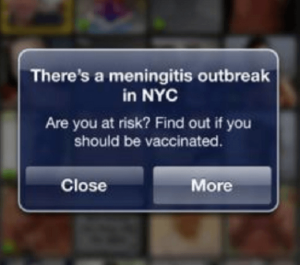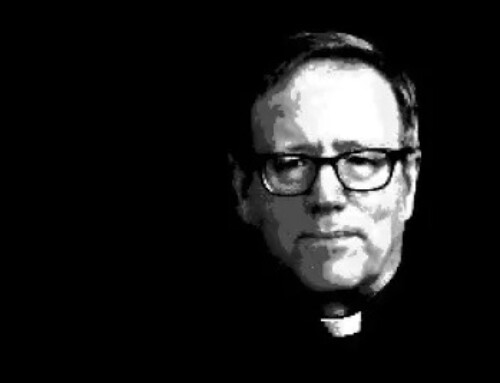A new study of “gay” men who recently relocated to New York City, from both outside the country and within the US, revealed that:
“Participants described encountering an abundance of sexual opportunity in New York City, accessible to even the newest arrivals through internet sex sites. Some migrants expressed surprise that few men they met were interested in dating or establishing trust before having sex.”1.

Grindr warning: The gay bathhouse app of the 21st-Century.
In addition, those who took part in the study described a world in which: “…condom use were seldom discussed with sex partners for some men even with new partners or before sex without condoms.” This finding goes part and parcel with another recent survey of gay men in 21 US cities which found that, among HIV-negative gay men: concordant (21% to 27%) and discordant condomless sex increased (8% to 13%) between 2005 to 2014; concordant refers to both partners having the same HIV status and discordant is two partners with different statuses.
Presumably, all this sexual freedom should create a mass efflorescence of “gay” happiness and contentment; actually, the opposite is true. A demographic study, comparing the homosexual and heterosexual populations of New York City found, among other things, that MSM [men who have sex with men] were more likely than MSW [men who have sex with women] to report poor mental health status and diagnoses of depression.3.
See more here: https://josephsciambra.com/homosexuality-as-the-universal-untreated-mental-illness
It’s no accident that the disco era of the 1970s crashed just as AIDS began to rise. Beginning in 1969, with the Stonewall Riots in New York City, over the next ten years, homosexuals, specifically gay men, would make an incredible leap in terms of societal and cultural acceptance: for instance, in 1967, CBS ran the infamous documentary “The Homosexuals” which explored different viewpoints, but also decidedly highlighted the then accepted theory that homosexuality was a mental illness; yet, the most remarkable aspect of the program were the rather sinister clips of faceless gay men being interviewed – featuring one terrified 19-year old who was picked-up soliciting a man in a public park; overall, the entire hour-long episode gave the impression of a televised vice-raid or a training video for Abnormal Psychology. In the following decade, everything would change.
A dramatic shift in perception began in 1973 with the declassification of homosexuality as a mental illness. By the end of the 1970s, gay men occupied a level of social and cultural acceptance that would have been unimaginable just 10 years prior – the advent of “gay” culture within the disco movement, the popularity of the Village People, the incorporation of gay characters and themes in TV-sitcoms such as “Maude,” “Soap,” and “Three’s Company,” the election of the first openly gay man, and the 1979 National March on Washington for Lesbian and Gay Rights with 100,000 in attendance.
Part and parcel with this new level of tolerance was a flourishing of gay sex culture within major US cities – specifically New York City, Los Angeles, and San Francisco. Amidst these new found sexual freedoms – a depressive malaise based on a pervasive boredom (perfectly crystalized in an early-80s candid shot of Boy George, New York socialite Cornelia Guest, and the Village People “cowboy” – all looking massively listless and underwhelmed) began to appear; the over saturation in sex compelled many gay men into overindulgence. In the landmark book “And the Band Played On” by Randy Shilts, the history preceding the AIDS crisis is methodically detailed: “At the New York Gay Men’s Health Project…30 percent of the patients suffered from gastrointestinal parasites. In San Francisco, incidence of ‘Gay Bowl Syndrome,’ as it was called in medical journals, had increased by 8,000 percent after 1973. Infection with these parasites was a likely effect of anal intercourse…”
Nowhere was this reckless desperation more evident than in 1980, when William Friedkin, the director of “The Exorcist,” created another sort of horror-show with his depiction of New York City gay sex clubs in the film “Cruising.” The realistic depictions of rank perversions in “Cruising,” which were actually filmed in several leather and S&M clubs in New York, often incorporating actual gay clients as extras, revealed how “gay” culture, despite its now open success, was beginning to devour itself through excess. As the film progresses, there is this pervading descent into darkness that becomes almost inescapable; in the storyline, this is depicted in the character of Ted, a somewhat naive young man and would-be playwright, existing on the periphery of the New York gay scene, who, by the end of the movie, is slaughtered by a serial killer. No one was safe. This would foreshadow the senseless butchery under AIDS.

In the 1990s, especially after the introduction of relatively cheap antivirals, which kept HIV-positive homosexual men indefinitely alive, gay political activism shifted from AIDS research to wider social acceptance, going beyond the pop-culture approval achieved in the 1970s, and instead set its aim on the “gay” Holy Grail of same-sex marriage. At the time, it was the only thing left; in the early 1990s, Madonna openly kissed other women and featured a cadre of clearly gay men in her dance troupe; the younger generation had been conquered through MTV.
The 1996 Defense of Marriage Act signaled the beginning of a new fight. And, like in the 70s, the manic push for acceptance coincided with a resumption of pre-AIDS partying and perversity: witnessed in the disco-revival movement of the late-90s, the film “54,” and the reintroduction of gay bareback pornography. This sort of highly intense mix of sex, music, and drugs has currently materialized in the gay “chemsex” phenomena.
With the seminal moment of the Supreme Court’s decision regarding gay marriage, homosexuality has gone back to late-1970s-early-80s highpoint; only, again, as in the first few years-right-before AIDS, success and freedom has not engendered happiness, but a conscious return to mutilation and oppression (see left: current gay it-boy Colton Haynes.) As in the late-70s rise of gay leather-bondage culture, after the mass narcotic effect of the decade’s advances for gay men, today – homosexual men are increasingly self-destructive. This was probably first noticed in 1999, where researchers in San Francisco found: “…that the prevalence of unprotected anal sex rose by a third to a half in just fo ur years. Furthermore, about half of the men having unprotected anal sex had partners of unknown or different HIV status.”4. Recently there have been outbreaks of HIV transmitted drug resistance (TDR) and Ciprofloxacin-Resistant Shigellosis among gay men in New York City, a new strain of antibiotic resistant gonorrhea in San Francisco, and clusters of ocular syphilis in Los Angeles; all in the gay male population.
ur years. Furthermore, about half of the men having unprotected anal sex had partners of unknown or different HIV status.”4. Recently there have been outbreaks of HIV transmitted drug resistance (TDR) and Ciprofloxacin-Resistant Shigellosis among gay men in New York City, a new strain of antibiotic resistant gonorrhea in San Francisco, and clusters of ocular syphilis in Los Angeles; all in the gay male population.
It’s as if – the more “gay” men achieve, in terms of public support, the more they delve into sex; conversely, they realize that in “gay,” in gay sex, and even in approval – nothing changes and nothing is gained. The pain still persists. Hence, the tragic rush towards annihilation.
1. “New arrivals to New York City: vulnerability to HIV among urban migrant young gay men.”
Kobrak P, et al.
Arch Sex Behav. 2015 Oct;44(7):2041-53.
2. “Trends in condom use among men who have sex with men in the United States: the role of antiretroviral therapy and sero-adaptive strategies.”
Paz-Bailey G, et al.
AIDS. 2016 May 5.
3. “Men Who Have Sex With Men Have a 140-Fold Higher Risk for Newly Diagnosed HIV and Syphilis Compared With Heterosexual Men in New York City”
Preeti Pathela, DrPH, MPH, et al.
J Acquir Immune Defic Syndr 2011;58:408–416
4. “Gay men report high rates of unprotected anal sex with partners of unknown or discordant HIV status”
Ekstrand, Maria L., el al.
AIDS: 20 August 1999.





